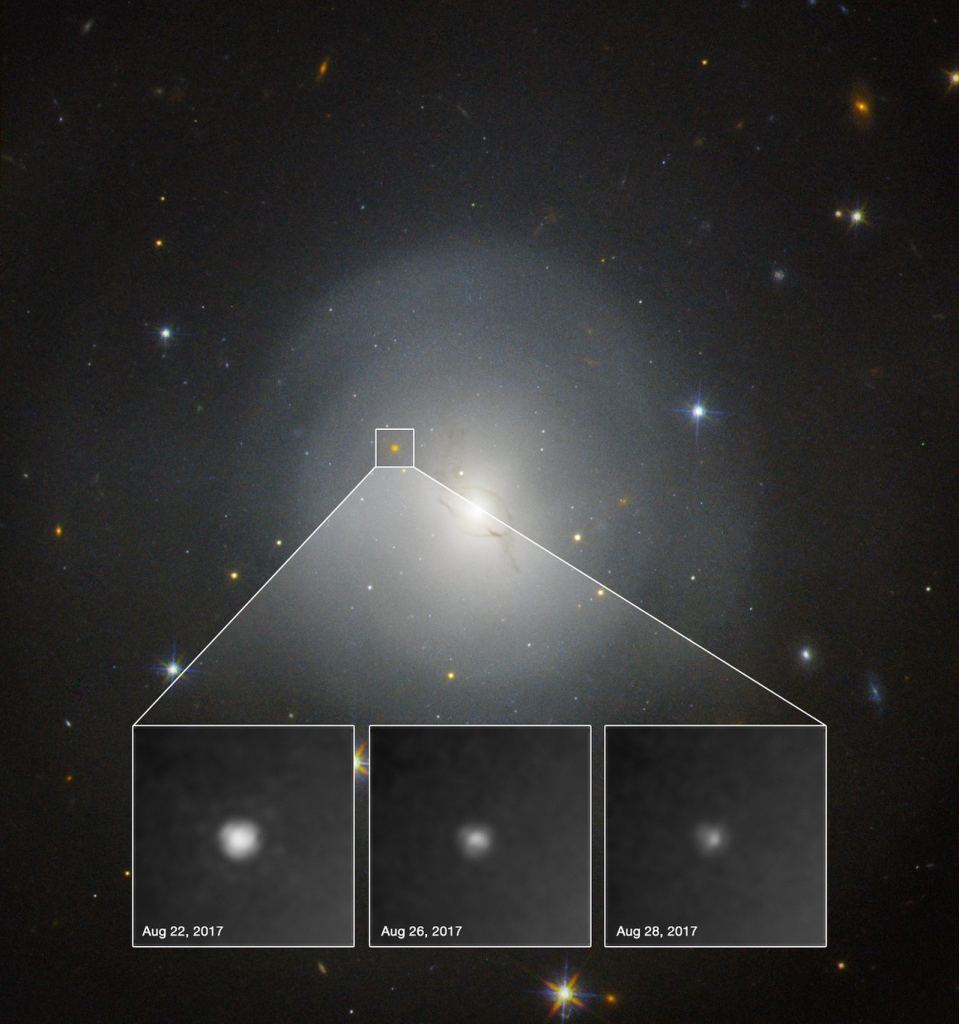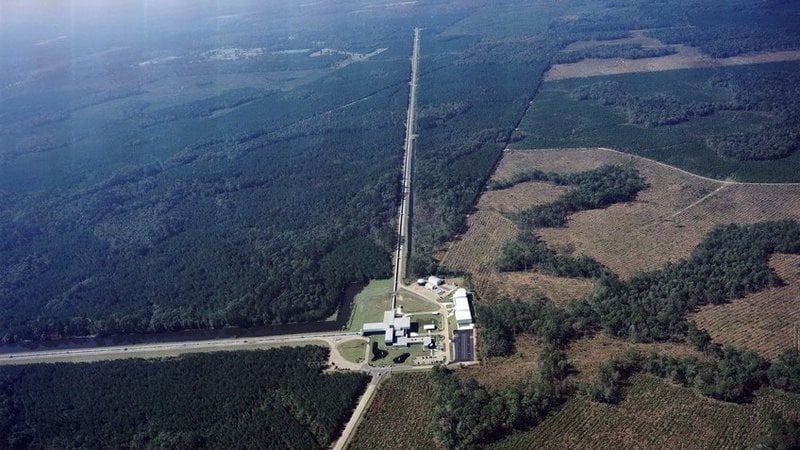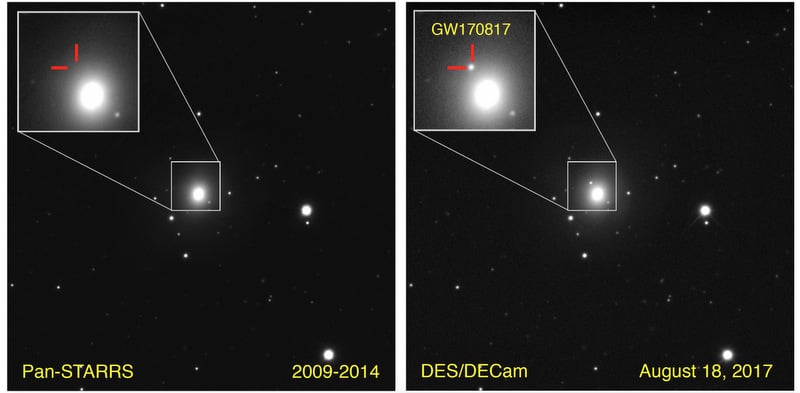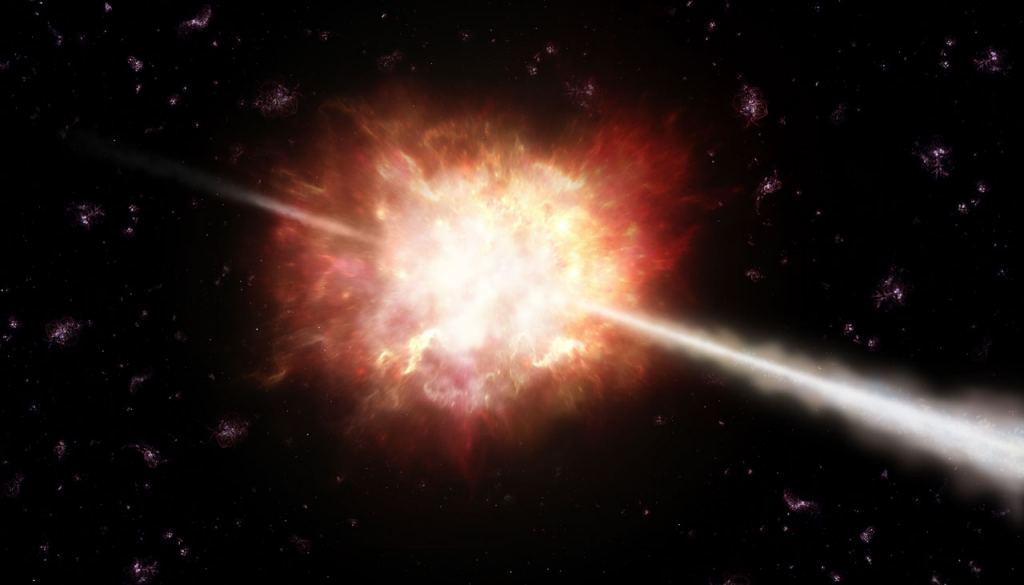In 2017, LIGO (Laser-Interferometer Gravitational Wave Observatory) and Virgo detected gravitational waves coming from the merger of two neutron stars. They named that signal GW170817. Two seconds after detecting it, NASA's Fermi satellite detected a gamma ray burst (GRB) that was named GRB170817A. Within minutes, telescopes and observatories around the world honed in on the event.
The Hubble Space Telescope played a role in this historic detection of two neutron stars merging. Starting in December 2017, Hubble detected the visible light from this merger, and in the next year and a half it turned its powerful mirror on the same location over 10 times. The result?
The deepest image of the afterglow of this event, and one chock-full of scientific detail.
"This is the deepest exposure we have ever taken of this event in visible light," said Northwestern's Wen-fai Fong, who led the research. "The deeper the image, the more information we can obtain."
Other than providing a deep image of the merger's afterglow, Hubble also revealed some unexpected secrets of the merger itself, the jet it created, and also some detail of the nature of short gamma ray bursts.
To many scientists, GW170817 is LIGO's most important discovery to date. The discovery won the Breakthrough of the Year Award in 2017 from the journal Science. Though collisions or mergers between two neutron stars were much talked about, this was the first time astrophysicists were able to observe one. Because they also observed it in both electromagnetic light and in gravitational waves, it was also the first "multi-messenger observation between these two forms of radiation," as it says in a press release.
It's partly circumstance that made this happen. GW170817 is quite close to Earth in astronomical terms: only 140 million light years away in the elliptical galaxy NGC 4993. It was bright and easy to find.
The collision of the two neutron stars caused a kilonova. They're caused when two neutron stars merge like this, or when a neutron star and a black hole merge. A kilonova is about 1000 times brighter than a classical nova, which occurs in a binary star system when a white dwarf and its companion merge. The extreme brightness of a kilonova is caused by the heavy elements forming after the merger, including gold.
The merger created a jet of material travelling at near light speed that made the afterglow difficult to see. Though the jet slamming into surround material is what made the merger so bright, and easy to see, it also obscured the afterglow of the event. To see the afterglow, astrophysicists had to be patient.
"For us to see the afterglow, the kilonova had to move out of the way," Fong said. "Surely enough, about 100 days after the merger, the kilonova had faded into oblivion, and the afterglow took over. The afterglow was so faint, however, leaving it to the most sensitive telescopes to capture it."
That's where the Hubble Space Telescope came in. In December 2017, Hubble saw the visible light from the merger's afterglow. From then until March 2019 Hubble re-visited the afterglow 10 more times. The final image was the deepest one yet, with the venerable space 'scope staring at the spot where the merger occurred for 7.5 hours. From this image astrophysicists knew that the visible light was finally gone, 584 days after the two neutron stars merged.
The afterglow of the event was key, and it was faint. In order to see it and study it, the team behind the study had to remove the light from the surrounding galaxy, NGC 4993. The galactic light is complicated, and in a manner of speaking it would "infect" the afterglow and impair the results.
"To accurately measure the light from the afterglow, you have to take all the other light away," said Peter Blanchard, a postdoctoral fellow in CIERA and the study's second author. "The biggest culprit is light contamination from the galaxy, which is extremely complicated in structure."
But they now had 10 Hubble images of the afterglow to work with. In these images, the kilonova was gone and only the afterglow remained. In the final image, the afterglow was gone, too. They overlaid the final image onto the other 10 images of the afterglow, and using an algorithm they meticulously removed all the light from the earlier Hubble images showing afterglow. Pixel by pixel.
In the end they had one series of images over time, showing just the afterglow without any contamination from the galaxy. The image agreed with modelled predictions, and it's also the most accurate time-series of images of the event's afterglow.
"The brightness evolution perfectly matches our theoretical models of jets," Fong said. "It also agrees perfectly with what the radio and X-rays are telling us."
So what did they find in these images?
First of all the area where the neutron stars merged was not densely populated with clusters, something that previous studies predicted should be the case.
"Previous studies have suggested that neutron star pairs can form and merge within the dense environment of a globular cluster," Fong said. "Our observations show that's definitely not the case for this neutron star merger."
Fong also thinks that this work has shed some light on gamma ray bursts. She thinks that those distant explosions are actually neutron star mergers like GW170817. They all produce relativistic jets, according to Fong, it's just that they're viewed from different angles.
Astrophysicists usually see these jets from gamma ray bursts from a different angle than GW170817, usually head on. But GW170817 was seen from a 30 degree angle. That had never before been seen in optical light.
"GW170817 is the first time we have been able to see the jet 'off-axis,'" Fong said. "The new time-series indicates that the main difference between GW170817 and distant short gamma-ray bursts is the viewing angle."
A paper outlining these results will be published in the Astrophysical Journal Letters this month. It's titled " The optical afterglow of GW170817: An off-axis structured jet and deep constraints on a globular cluster origin." It's viewable at the above link at arxiv.org.
More:
- Research Paper: The Optical Afterglow of GW170817: An Off-axis Structured Jet and Deep Constraints on a Globular Cluster Origin
- Press Release: Afterglow sheds light on the nature, origin of neutron star collisions
- LIGO/Virgo: THE DAWN OF MULTI-MESSENGER ASTROPHYSICS: OBSERVATIONS OF A BINARY NEUTRON STAR MERGER
 Universe Today
Universe Today





